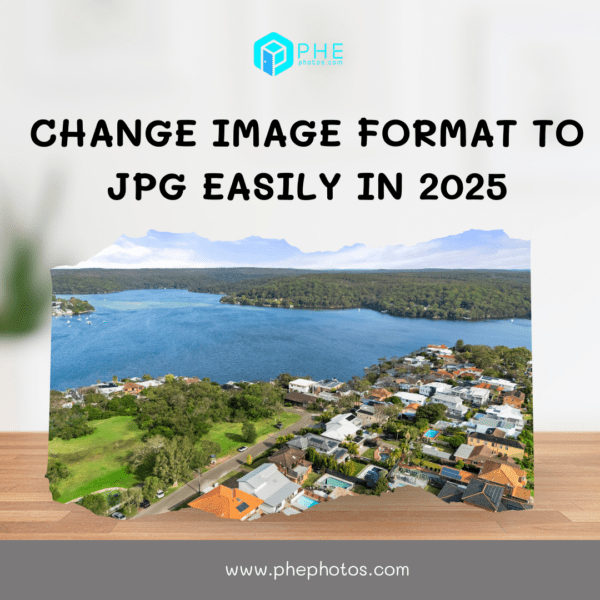The Future of Real Estate Photography: Trends and Forecasts for 2025
Real estate photography continues to evolve as the property market demands increasingly engaging and innovative visuals. As 2025 approaches, new technologies and shifting buyer expectations promise to redefine this crucial marketing tool.
In this blog, we explore upcoming trends and provide valuable insights into how the real estate industry will transform photography practices.
1. The Growing Role of AI in Real Estate Photography
Artificial intelligence (AI) has already entered the realm of photography. By 2025, AI tools will dominate photo editing and enhancement processes. These tools can:
- Automatically correct lighting issues.
- Replace skies seamlessly.
- Optimize image quality for online platforms.
Moreover, AI-powered virtual staging will likely become more accessible, enabling agents to transform empty spaces instantly. This innovation saves time and reduces costs while boosting buyer engagement.
2. Drone Photography Will Reach New Heights
Drone photography has gained popularity in real estate marketing. By 2025, its usage will expand further. High-resolution drone cameras will provide:
- Breathtaking aerial shots.
- Detailed neighborhood overviews.
- 360-degree property tours.
These perspectives help potential buyers visualize properties in context, enhancing their decision-making process. Regulations surrounding drones are expected to relax, making them even more accessible for photographers and real estate agents.
3. 3D and Virtual Reality Experiences Will Dominate
The demand for immersive experiences is rising. By 2025, 3D and virtual reality (VR) content will become industry standards. Photographers will need to invest in equipment capable of capturing high-quality 3D visuals. These technologies allow potential buyers to:
- Virtually walk through properties.
- Customize spaces to their preferences.
- Explore every detail remotely.
These innovations bridge geographical gaps and save time for both buyers and sellers.
4. Smartphone Cameras Will Rival Professional Equipment
Smartphones are becoming increasingly sophisticated. By 2025, many smartphones will feature cameras rivaling professional-grade equipment. Real estate agents and photographers will use:
- Advanced zoom capabilities.
- AI-assisted editing software.
- Enhanced low-light performance.
This development will empower agents to capture quality images on the go, reducing dependence on bulky equipment.
5. Sustainable Practices in Photography
Sustainability is gaining importance across industries, including real estate photography. By 2025, photographers will adopt eco-friendly practices such as:
- Using energy-efficient equipment.
- Offering digital-only deliverables to reduce paper waste.
- Collaborating with green-certified printing companies.
Buyers increasingly value sustainability, making this shift a marketing advantage.
6. The Importance of Local Market Insights
Localized content will remain essential for real estate photography in 2025. Photographers will focus on capturing:
- Regional architectural styles.
- Unique selling points of specific neighborhoods.
- Seasonal imagery tailored to local markets.
Localized visuals help listings resonate with targeted buyer demographics, improving conversion rates.
7. Real Estate Video Content Will Continue to Grow
Video content is already a powerful tool in real estate marketing. By 2025, its importance will increase further. Photographers will embrace:
- Dynamic video tours.
- Time-lapse property transformations.
- Cinematic-style marketing videos.
With video platforms like YouTube influencing buyers, high-quality video production will become a necessity.
8. Enhanced Social Media Integration
Social media platforms are evolving to prioritize visual content. By 2025, real estate photography will adapt to:
- Instagram’s latest features.
- TikTok’s short-form video trends.
- Pinterest’s immersive visual storytelling.
Photographers will optimize images and videos for social media algorithms, ensuring maximum visibility.
9. Predictive Analytics for Targeted Marketing
Predictive analytics will play a crucial role in real estate marketing by 2025. Combining photography with data insights will allow agents to:
- Target-specific buyer profiles.
- Highlight features most likely to attract interest.
- Optimize listing performance based on historical trends.
Photography tailored to analytics will enhance its effectiveness as a sales tool.
10. Evolving Buyer Expectations
As Gen Z and millennials dominate the property market, their preferences will shape real estate photography. These buyers value:
- Authentic, relatable visuals.
- Minimal editing that feels genuine.
- Images highlighting sustainable and modern design elements.
Photographers must adapt their styles to align with these expectations.
Preparing for 2025: Steps for Real Estate Professionals
To stay ahead, real estate agents and photographers must embrace these trends proactively. Key steps include:
- Investing in technology: Upgrade equipment to include AI tools, drones, and 3D cameras.
- Learning new skills: Familiarize yourself with video editing, VR content creation, and social media optimization.
- Collaborating with experts: Partner with experienced photographers who understand emerging trends.
- Monitoring market trends: Stay updated on buyer preferences and industry innovations.
Conclusion
The future of real estate photography is exciting and dynamic. By 2025, technological advancements and changing buyer demands will reshape how properties are marketed. Real estate professionals must adapt to these changes to remain competitive. Embracing innovation ensures that properties are presented in the most compelling and impactful way possible.
Read more:
Unlocking the Power of Photo Enhancement in Real Estate Photo Editing
Unlock Marketing Success with a Real Estate Photo Editor
Secret Weapons When Working With Photo Editing Services











